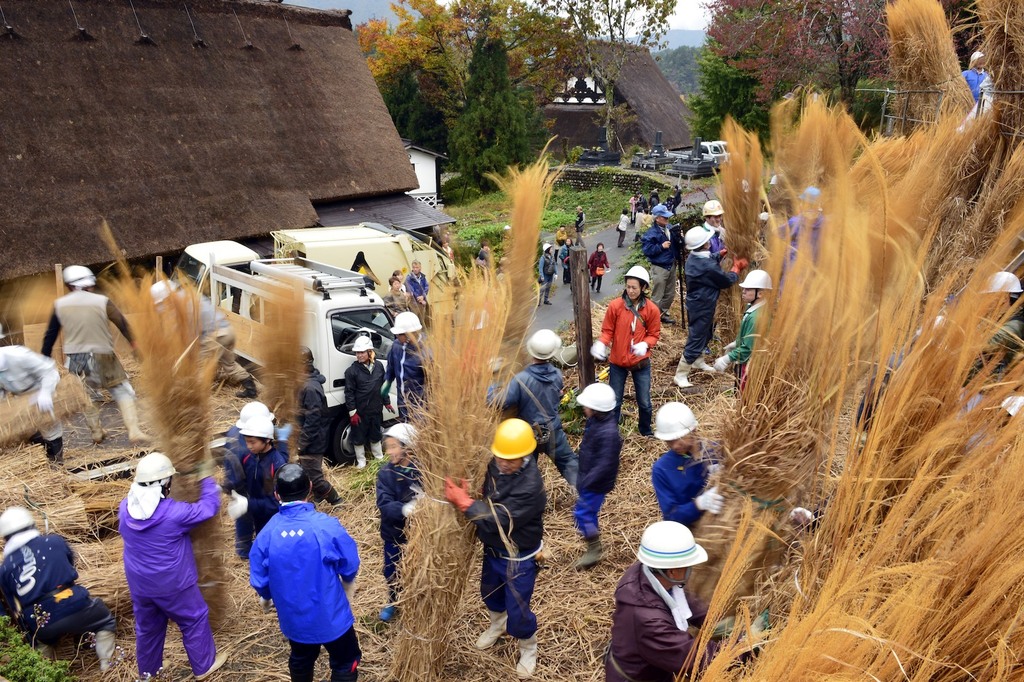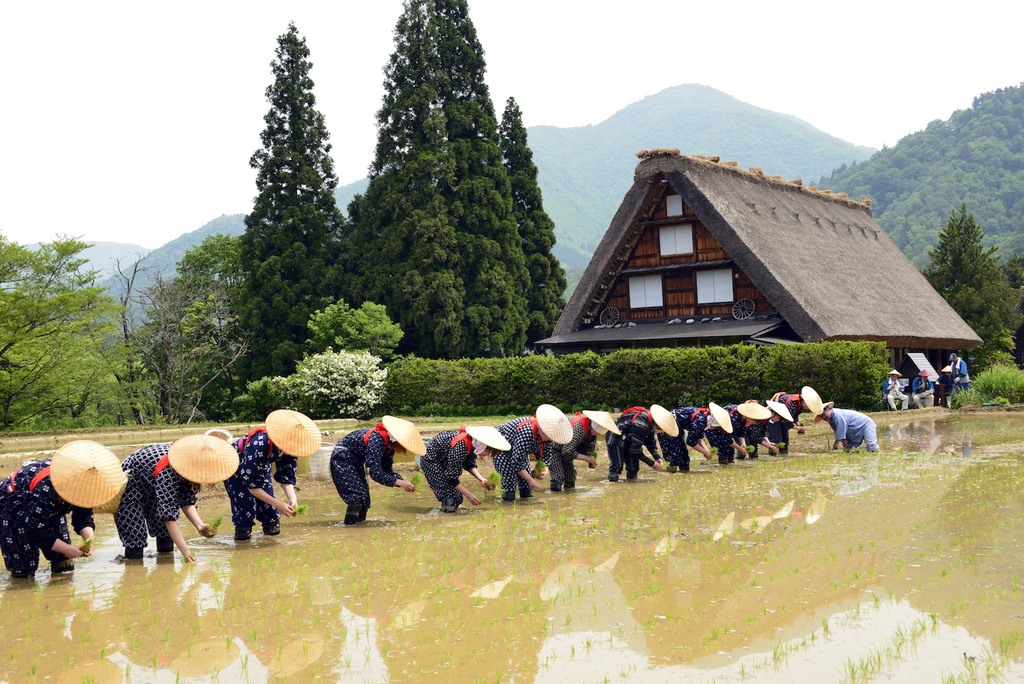The Shirakawa-go (白川郷, Shirakawagō) and neighboring Gokayama (五箇山) regions line the Shogawa River Valley in the remote mountains that span from Gifu to Toyama Prefectures. Shirakawa-go is located in the north-western part of Gifu Prefecture, in the approximate center of Japan. The name “Shirakawa-go” is taken from the traditional Japanese name for the region used in ancient times. It equates to the modern administrative area of “Shirakawa Village” Because of the area’s natural environment, with high mountains and heavy snowfall, interaction with neighboring regions was limited. However, this also created the conditions for the development of unique cultural practices and lifestyles. A Japanese mountain settlement that what was once considered a wild and unexplored region, Shirakawa-go was registered as a UNESCO World Heritage Site in December 1995.
Okayyyyyyy…NOW! Shirakawa-go from my perspective:
*Lets pick up where we left off. KLM just had a fantastic time in Takayama. Our next stop is Shirakawa-go *
*PLAY*
After leaving Takayama, I didn’t think anything else could astound me for the day. We ate our last fill of local food, including some delicious cheesecake, drank our last bit of sake and headed to our next destination. After driving for approx 1.5 more hours we started noticing that we were going deeper into the mountains. It seemed like long periods passed before we saw a village, or any kind of housing or people. The mountains were covered with a considerable amount of snow as compared to Takayama, and the temperature was definitely lower. Our tour guide put on an informational video about Takayama and it was all pretty cool until I heard “traditional gassho houses MADE OF STRAW, WOOD AND NO NAILS.”
We were also gently warned that while this was a sightseeing tour, that people actually still live in this village and we should be careful about trespassing onto people’s property, excessive noise and drone photography. Basically, just be mindful of the citizens’ privacy.
When we arrived at the settlment, it was a winter wonderland. There was basically no snow in Takayama, and this seemed a shocking contrast for a neighboring village. We stepped out of the bus and immediately tightened our scarves and jackets. This was no joke. Takayama was freezing but Shirakawa-go was the freezer itself! OOOhhhhhhh childddddd winter was not to be played with in these parts.
After exploring the area for a bit, taking in the snow and of course taking countless photos (like the tourists we are lol) we made it to one of the most awe-inspiring things I have EVER seen. The Gassho – zukuri farmhouses! If I’m being honest, I probably stood there staring for a few minutes.

Declared a UNESCO world heritage site in 1995, they are famous for their traditional “gassho-zukuri” farmhouses, some of which are more than 250 years old. Gassho-zukuri means “constructed like hands in prayer”, as the farmhouses’ steep thatched roofs resemble the hands of Buddhist monks pressed together in prayer. The reason for this is to prevent the weight of snow from crushing the rooftop in winter. Moreover, the houses are built facing the north-south direction. This is to alleviate the wind resistance and to adjust the intensity of solar radiation to the rooftop. So that the people living inside the Gassho can feel cool in summer and warm in winter.The architectural style was developed over many generations and is designed to withstand the large amounts of heavy snow that falls in the region during winter. The roofs, made without nails, provided a large attic space used for cultivating silkworms.
At first I thought, they actually look kind of cute and maybe small on the inside but when I stepped inside I realized I was grossly mistaken. There are as many as 3-4 floors inside this architectural wonder! And with ladders instead of actual stairs. Listen…the kind of balance skills you need to live in one of these houses!
One of the ways in which gassho style houses differ from other traditional Japanese houses is that the attics are employed as work spaces. From the Edo to the early-Showa era, sericulture (silk production) was the foundation industry supporting the people of the village. The large attic spaces under the eaves were usually divided into 2 to 4 layers and put to effective use in the rearing of silkworm.
How someone came up with this idea for these houses is just beyond me. No nails, only wood and straw roofs yet it protects them through the winter and cools them in the summer! Just…wow…I honestly, could bore you with words of how amazed I was, how in awe I was, how majestic and preserved but instead here are some snapshots of us on the inside:
And here are some shots of us in and around the reserve:
BUT…THERE’S MORE!
The physical structures were just half of what dazzled me though. The part 2 of my amazement was due to what is called “The Heart of “Yui.”I won’t even use my own words which may fall short or discredit the tradition. Instead read this excerpt below from one of the villagers on the Shirakawa-go website:
“The Heart of “Yui.”
“Yui is deeply treasured here.”
“Yui” stands for supporting each other in Japanese. The reason why Shirakawa village can exist until nowadays is due to the local spirit of backing up each other. As our village is surrounded by mountains, snow will be accumulated in winter and thus blocking our ways in and out of the village. We could not survive if we did not help each other with our livelihood. Facing such a strict natural condition, our “yui” spirit became strong enough to sustain the existence of Shirakawa-go.Even in the modern times, our heart of “yui” is still carrying on. For example, the whole village would participate in changing the rooftop of a Gassho. We want to pass on this message to the next generation so that the village can stay in the future. It is not an exaggerated saying that the heart of “yui” is what holds our village together from falling apart. We hope that by knowing the heart of “yui” in Shirakawa-go, people can understand the importance of giving out their helping hand and to strengthen the bonding of each other.
Here are some images I found on The Heart of Yui compliments of the Shirakawa-go Tourist Association website: https://shirakawa-go.gr.jp/en/about/
Can there be a greater message?
Thank you for reading and may you carry “The Heart of “Yui” with you always. I know I certainly do.
Peace, Love and Light!
– Kers
References:
https://www.japan-guide.com/e/e5950.html
http://ml.shirakawa-go.org/en/



































